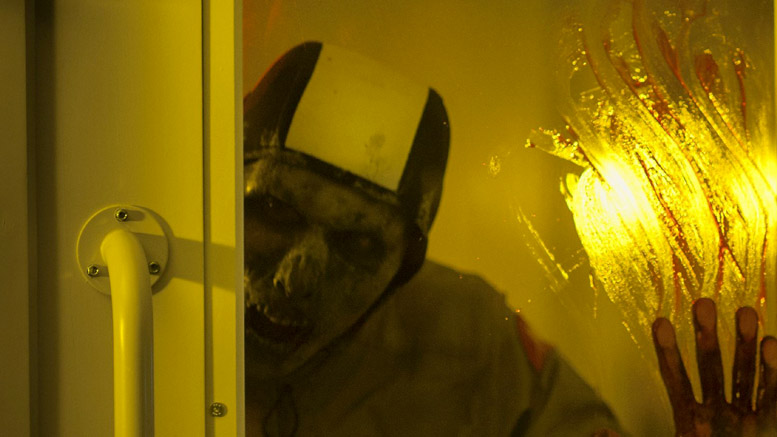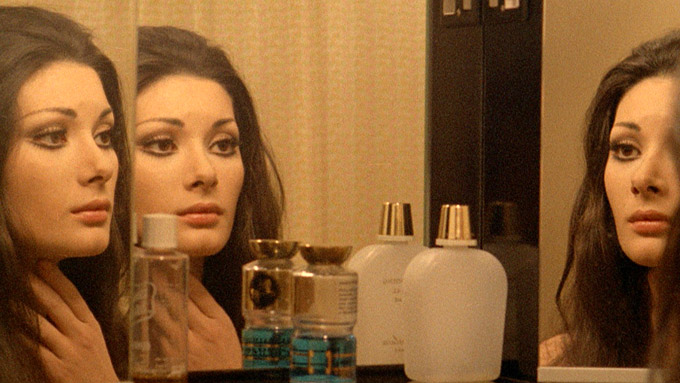Aka Il corsaro nero nell’isola del tesoro
1965
Seven Film, S.P.A
Director: Dean Vert [Vertunnio De Angelis]
Story: Dino Sant’Ambrogio
Screenplay: Aldo Barni [Aldo Barui]
Cinematography: Antonio Belviso {Eastmancolor}
Music: Felice Di Stefano
Editor: Mariano Arditi
Set designer: Demofilo Fidani
Cameraman: Gino Santini
Filmed: Incir – De Paolis & Titanus [Rome, Italy]
Release information: Italy (31.12.72)
Cast: George Hilton (Suarez, aka Don Francisco Ramirez Del Puente), Claude Dantes (Princess Anne), John Warren [John Vari] (Garcia, a pirate), Jose Torres (‘The Raven’, a pirate), Angelo Santamartini, Emmanuele Valtan, Antonio Bullo c.s.c, Luigi Antonio Guerra c.s.c, Stefano Oppedisano c.s.c, Capitan Zicavo, Lucien Benetti, Lucio De Sanctis, Giorgio Constantini, Monica De Sanctis, and with Tony Kendall [Luciano Stella] (Cpt. Ruiz)
Uncredited: Amerigo Leoni (one of Garcia’s pirates)
Note: Luigi Antonio Guerra and Stefano Oppedisano are not visible, and were unlikely to have appeared in a film made at the time. It is likely that their names were added for the 1970s re-release
The Black Pirate was made back-to-back with its partner piece, The Masked Man against the Pirates, with the intention that both should be sold to a pre-arranged international distribution company. Unlike Masked Man, however, it appears to have remained unreleased either domestically or internationally, and was long assumed to be a lost film. According to Tony Kendall: “I believe [it] remained unedited because the film wasn’t finished. The producer didn’t have enough money, and one of the last things he did was go into a music shop and buy thirty guitars, then resell them in order to pay for our packed lunches.” [Cine 70 #7]. The two share many of the same crewmembers and cast, most of whom play the same characters in both films. It’s not a sequel, though, more of a remake; no acknowledgement is made of the events of the other production whatsoever.
After a fierce contretemps, a Spanish naval frigate under the command of Captain Boltan scores a big victory in the battle against the assorted brigands who are terrorizing the American coast: the capture of the pirate Garcia and his entire crew. Unfortunately, before they can make it back to port the ship runs aground on the Island of Esmerelda; home to a notorious cutthroat called ‘The Raven’ (Jose Torres).
The Raven promptly orders his men to both steal everything and to track down and kill any of the soldiers who have survived. Garcia receives a slightly warmer welcome: invited to the blackguard’s camp he is horrified to find that they have a total ban on rum, roast meat and women. What’s your honest pirate supposed to do? Well, even the threat of the noose is preferable to a bunch of vegetarians, so he joins forces with the remaining Spaniards.
They soon come up with a clever plan to oust the villains: plying them with strong liquor in the hope that, unused to alcohol as they are, they can be easily vanquished. Unfortunately, The Raven isn’t that stupid, and it is Garcia’s own men who become intoxicated. It seems that escaping – not to mention finding the sizable treasure that’s hidden on the island – could prove more difficult than they had thought.
The main change from The Masked Man against the Pirates is that this is much more involved with the pirate Captain Garcia, who is escalated from the position of being a (somehow likable) villain to practically the central character. Decked out once more in his big jolly-roger hat, he is pitted against the sly ‘Raven’ (Jose Torres), who has something of the Bond villain about him; not least with his underground / island hideout and army of disposable henchmen in silly costumes. He ends up being literally slapped to death at the climax, which seems somehow appropriate.
Ostensible hero George Hilton is little more than his lieutenant for the first half of the running time, before his hidden depths (and hidden agenda) start to become clear. Poor old Tony Kendall fares even worse, being a rather peripheral twit who disappears three quarters of the way through (presumably moving on to a far better paid job as Joe Walker in the Kommissar X series).
Despite being dropped from the title, the previous film’s ‘Masked Man’ does feature here – although making no mention of it whatsoever seems a funny way of trying to kick off a marketable franchise. In fact, he doesn’t really appear much, simply popping up every half-hour to show off his green tights and Santo-mask. Things get really silly when a masked woman pops up (the high voice and pointy breasts are a clue as to her gender, but nobody at all seems to pick up on this).
It must have been made on a small budget, with plenty of ‘shaking the camera in order to emulate a storm’ fun and outtakes from more expensive productions. There’s also a hell of a lot of chaotic running around and yelling. Some mention must also be made of the appalling dubbing (with Tony Kendall being served particularly badly and sounding like the geeky comic store owner from The Simpsons). Beyond that, it all plays rather like a Spaghetti Western, with its Almeria-like scenery, minor intimations of sadism, extravagant costumes (by cult icon Demofilo Fidani) and assorted hopeless authority figures. It’s just that it has eye-patches and rapiers rather than cigarillos and six-guns.


